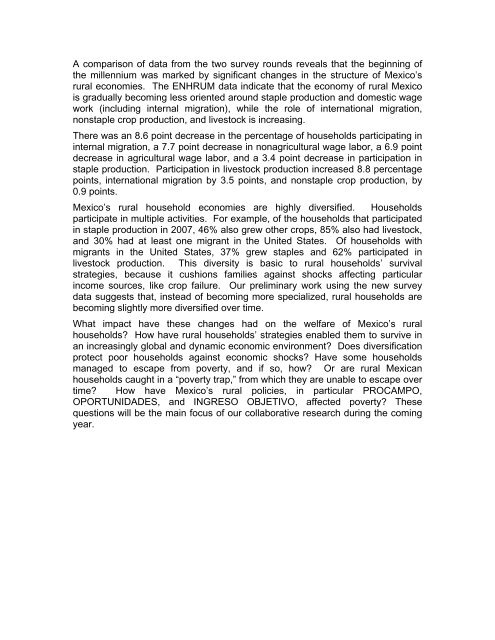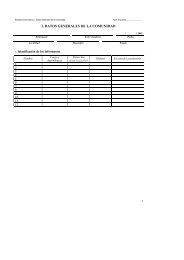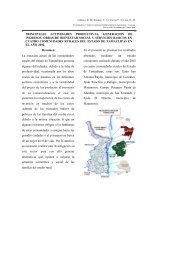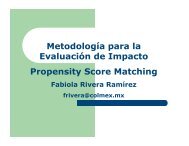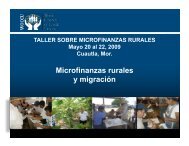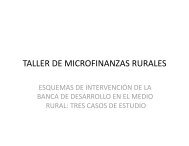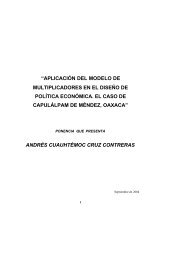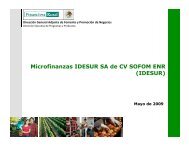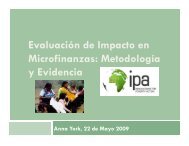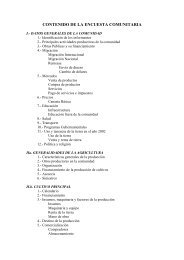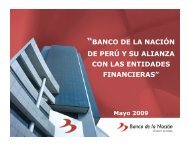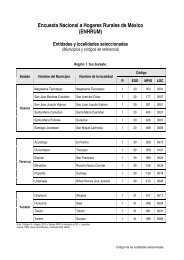INFORME FINAL DEL PRECESAM - El Colegio de México
INFORME FINAL DEL PRECESAM - El Colegio de México
INFORME FINAL DEL PRECESAM - El Colegio de México
You also want an ePaper? Increase the reach of your titles
YUMPU automatically turns print PDFs into web optimized ePapers that Google loves.
A comparison of data from the two survey rounds reveals that the beginning of<br />
the millennium was marked by significant changes in the structure of Mexico’s<br />
rural economies. The ENHRUM data indicate that the economy of rural Mexico<br />
is gradually becoming less oriented around staple production and domestic wage<br />
work (including internal migration), while the role of international migration,<br />
nonstaple crop production, and livestock is increasing.<br />
There was an 8.6 point <strong>de</strong>crease in the percentage of households participating in<br />
internal migration, a 7.7 point <strong>de</strong>crease in nonagricultural wage labor, a 6.9 point<br />
<strong>de</strong>crease in agricultural wage labor, and a 3.4 point <strong>de</strong>crease in participation in<br />
staple production. Participation in livestock production increased 8.8 percentage<br />
points, international migration by 3.5 points, and nonstaple crop production, by<br />
0.9 points.<br />
Mexico’s rural household economies are highly diversified. Households<br />
participate in multiple activities. For example, of the households that participated<br />
in staple production in 2007, 46% also grew other crops, 85% also had livestock,<br />
and 30% had at least one migrant in the United States. Of households with<br />
migrants in the United States, 37% grew staples and 62% participated in<br />
livestock production. This diversity is basic to rural households’ survival<br />
strategies, because it cushions families against shocks affecting particular<br />
income sources, like crop failure. Our preliminary work using the new survey<br />
data suggests that, instead of becoming more specialized, rural households are<br />
becoming slightly more diversified over time.<br />
What impact have these changes had on the welfare of Mexico’s rural<br />
households? How have rural households’ strategies enabled them to survive in<br />
an increasingly global and dynamic economic environment? Does diversification<br />
protect poor households against economic shocks? Have some households<br />
managed to escape from poverty, and if so, how? Or are rural Mexican<br />
households caught in a “poverty trap,” from which they are unable to escape over<br />
time? How have Mexico’s rural policies, in particular PROCAMPO,<br />
OPORTUNIDADES, and INGRESO OBJETIVO, affected poverty? These<br />
questions will be the main focus of our collaborative research during the coming<br />
year.


